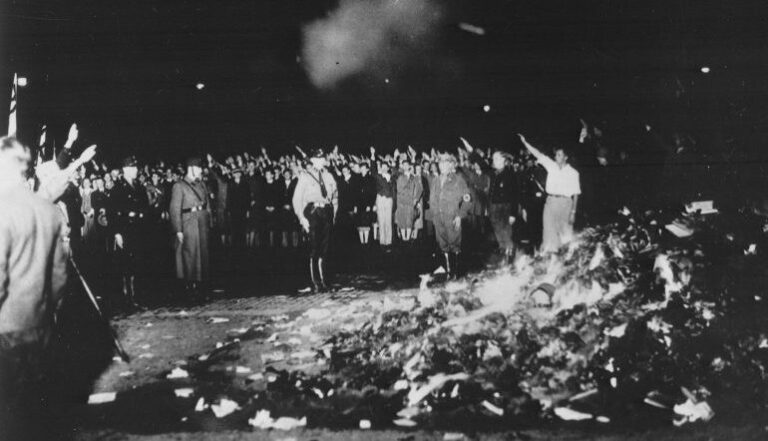Rated R for Racy
In the mid-90s, when I was a graduate student at Indiana University and nervously facing my first class of undergraduate creative writing students, I understood within the first couple of weeks that there were few things more fascinating or more daunting for writers than the moment they decide to disrobe their characters and place them in a compromising position. Or several compromising positions – whatever their preference might be. Some of my own stories feature characters in various states of undress, intent on offering themselves to people they might or might not believe are good for their egos or libidos. If we dare to write them, sex scenes offer writers the chance to reveal character in one of the most intimate situations conceivable, and they also show our readers how confusing or scary or beautiful sex can be.
The appeal of the romance-novel genre is well-documented, as is the success of pornography – a billion-dollar industry. Whether we want to admit it or not, we’re a species as interested in sex as we are in money, revenge, and power, and I think it’s safe to say that these impulses are all linked. For one, scientists have shown that as the bank balance rises, so does the libido. (It seems that no matter what I write, there’s a pun in there somewhere – further proof that sex is in the genetic code of countless human endeavors. Or else I just have an inexcusably dirty mind.) And despite its ubiquity, few of us seem to tire of sex or sexual thoughts, at least not for very long. Romance-novel fans keep returning to this genre, comforted and reliably thrilled, in spite of its predictable story lines.
I don’t think many would dispute that our sexuality is as inherently a part of our identity as the face we show the world each day. Ours is also a culture that has transformed sex into an enemy – if you want it too much, you’re a pervert. If you talk about it too much, you’re a pervert. If you do it too much, ditto. But if you don’t do it, you’re missing out, and boy, do we feel sorry for you. What are you, some kind of freak? On more than one level, sex is also a political construct, and any idea or concept argued about in every imaginable public forum is going to hold most of us in its thrall.
If you dare to create characters who want to have sex with each other and then go ahead and do it, consider reading a smart, funny essay by Steve Almond, “How to Write Sex Scenes: The 12-Step Program,” from his book (Not that You Asked) (the parentheses are his). A sampler: Almond advises writers not to use technical terms for body parts because “[t]here is no surer way to kill the erotic buzz than to use these terms, which call to mind—my mind at least—health classes (in the best instance) and (in the worst instance) venereal disease.” After reading this essay for the first time, I realized that when writing the scenes in a story that I didn’t want my father to read, I was trying to express in concrete terms the complicated mix of emotions that usually accompany two (sober) people taking off their clothes together for the first time. They are nervous, excited, afraid, possibly euphoric, but also mostly incapable of letting their bodies turn down the volume on their minds for a little while. They forget that the brain is the biggest erogenous zone, even if I try not to.
That’s probably the biggest challenge when you’re writing a sex scene – finding the right balance between interior and exterior states. What is the mind doing while the knee caps are being kissed and the breasts fondled? Maybe it’s noticing how stale the sheets smell and hoping the lover doesn’t have the same olfactory powers of discernment. As Almond writes, “The cool thing about sex—aside from its being, uh, sex—is that it engages all five senses.”
He saves what I think might be his best advice for the final step: “If you don’t feel comfortable writing about sex, then don’t.” Unless you’re ready to attend to the awkwardness along with the ecstasy, it’s probably best to remain a reader rather than a writer of sex scenes. Either way, if you’d like to make a close study of this specimen, some of the raciest books I can think of: Sabbath’s Theater and Portnoy’s Complaint (both by Philip Roth), Fear of Flying (Erica Jong), and Rabbit Is Rich (John Updike).
A pivotal book in my adolescence and probably in many others’: Judy Blume’s Forever, which I remember reading at twelve, and being bewildered by, what was for me, a new use of the word come. Why did Blume keep having her characters say it in such a strange context? My neighbor Lynn and I puzzled over this question at the bus stop one morning, she also having recently read Forever. Precocious and curious like so many others in our junior-high class, we were girls who had read a book too old for us, but it is one that I’m glad to have read when I did. Blume’s sex scenes were real-seeming, not at all coy or melodramatic. She wrote the novel at her daughter Randi’s request, wanting to help her understand what happens when two young people in love go into a room for the first time and step out of their clothes. Their inhibitions might not be so easily shed, just as yours, the writer’s, might not be either. Nonetheless, you’re likely to think it’s still worth trying, and if you practice, you’re probably going to get a little better each time.
This is Christine’s eighth post for Get Behind the Plough.
Image: Lotus Flower (Yoshikazu Takada, 2015)


